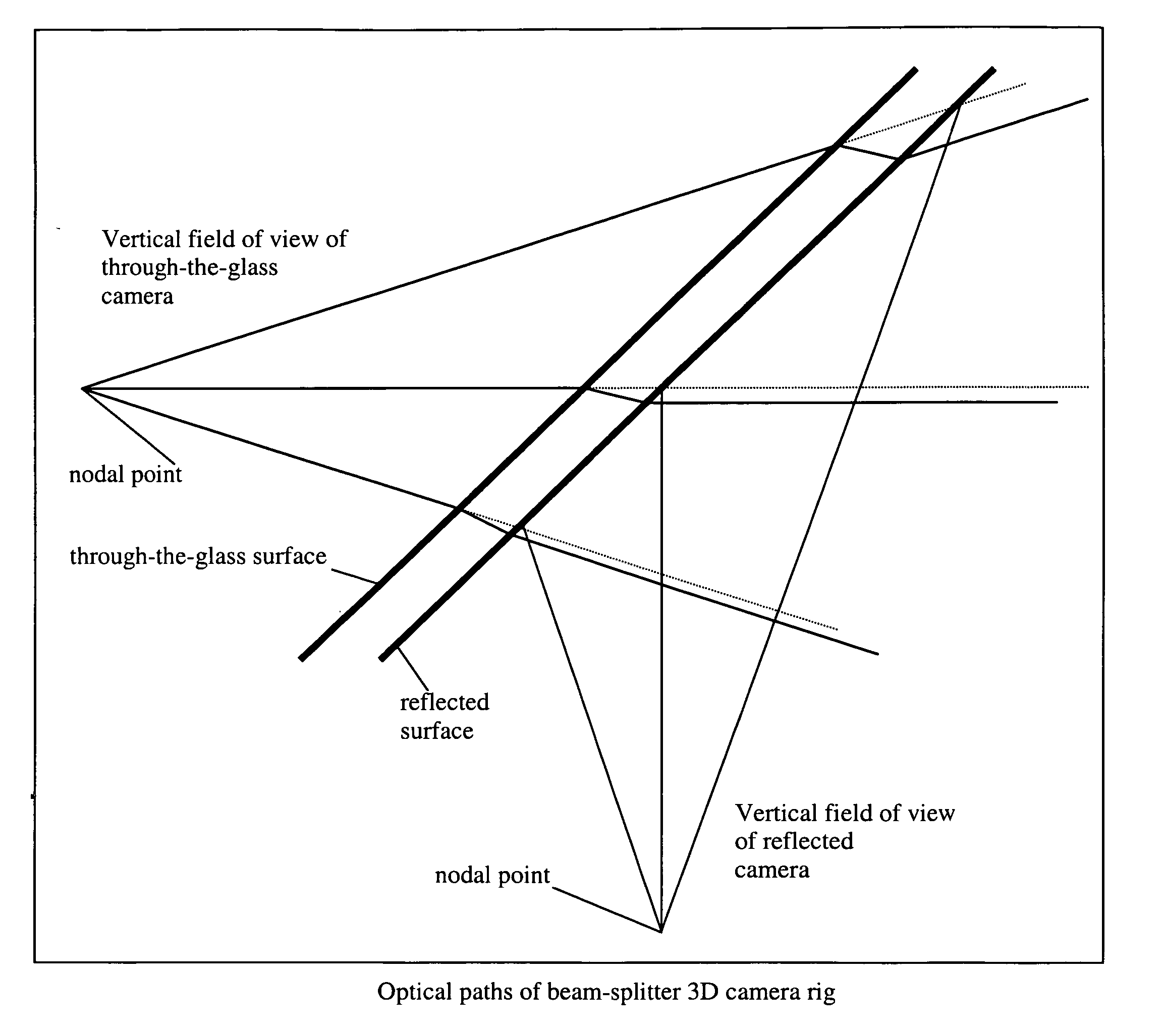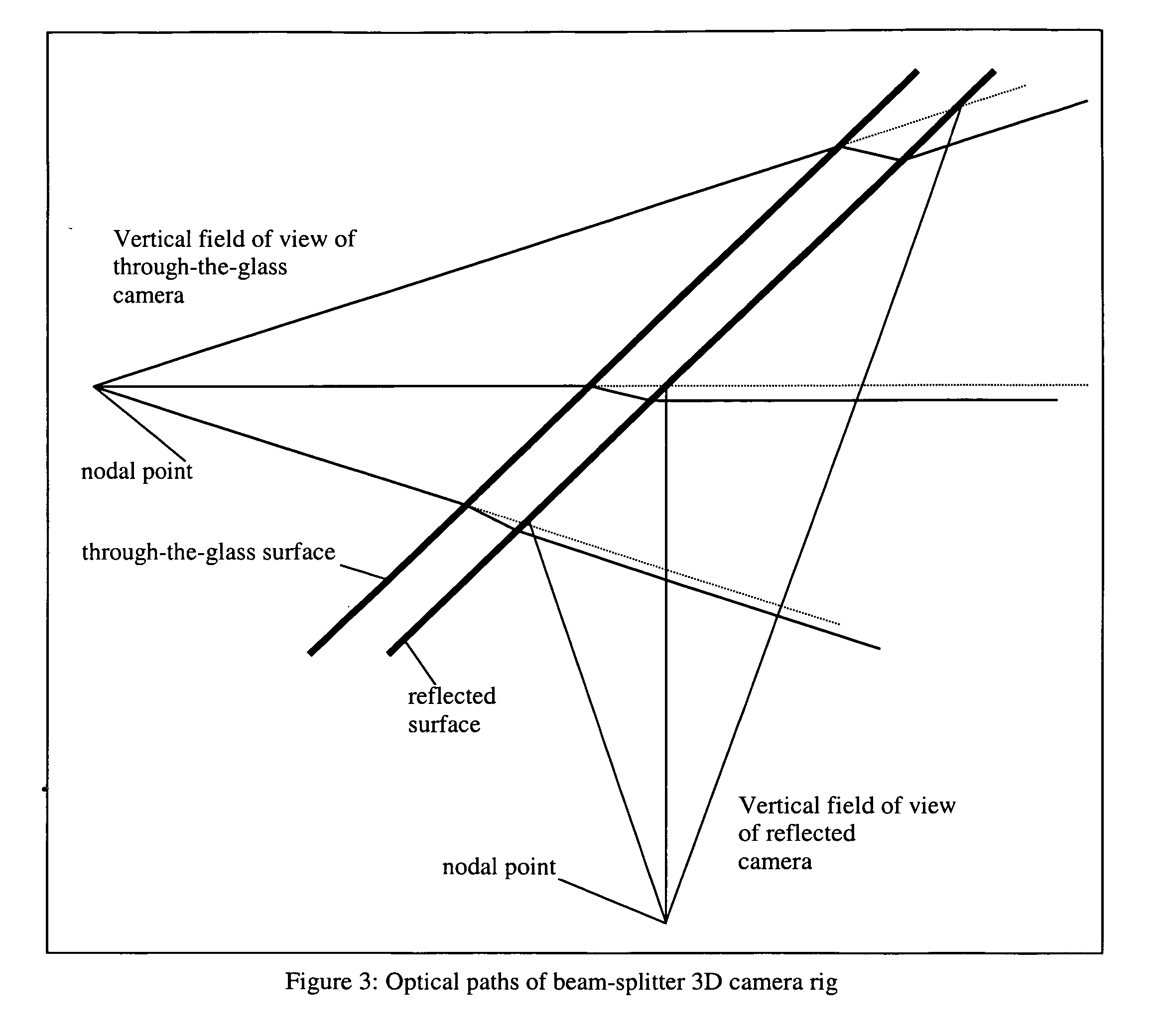Two camera stereoscopic 3D rig improvements
a stereoscopic 3d and camera technology, applied in stereoscopic photography, instruments, optics, etc., can solve problems such as inability to allow close-up shooting
- Summary
- Abstract
- Description
- Claims
- Application Information
AI Technical Summary
Benefits of technology
Problems solved by technology
Method used
Image
Examples
Embodiment Construction
[0021] a) Trapezoidal Beam-splitter Mirror.
[0022] To reduce the weight and size of a beam-splitter type 3D camera rig, the beam-splitter mirror needs to be only large enough to accommodate the optical paths to the imager (CCD, CMOS of film). A typical 3d rig with a 50 / 50 beam-splitter mirror, at 45 degrees to the optical centers, is shown in FIG. 1.
[0023] It is not necessary for the beam-splitter mirror to be rectangular, as is the case with other 3D rigs. In fact, by ray-tracing the optical paths from each camera, they are bound by a pyramid shape, therefore a 45 degree intersection into this pyramid by the beam-splitter mirror creates a trapezoidal shape, as shown in FIG. 2.
[0024] b) Beam-splitter Mirror Facing Downwards
[0025] To reduce dust collection on the surface of the mirror, and to reduce the effect of ambient light reflecting into the view of Camera 2 of FIG. 1, Camera 2 is made to look upwards, with the reflecting surface of the beam-splitter mirror facing downwards. ...
PUM
 Login to View More
Login to View More Abstract
Description
Claims
Application Information
 Login to View More
Login to View More - R&D
- Intellectual Property
- Life Sciences
- Materials
- Tech Scout
- Unparalleled Data Quality
- Higher Quality Content
- 60% Fewer Hallucinations
Browse by: Latest US Patents, China's latest patents, Technical Efficacy Thesaurus, Application Domain, Technology Topic, Popular Technical Reports.
© 2025 PatSnap. All rights reserved.Legal|Privacy policy|Modern Slavery Act Transparency Statement|Sitemap|About US| Contact US: help@patsnap.com



